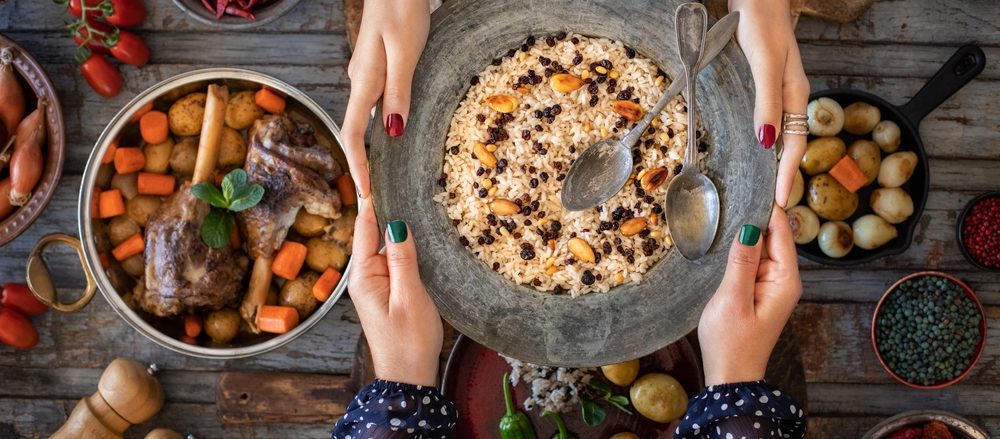This year, Eid al-Adha begins on Wednesday 28th June and ends on the evening of Thursday 29th June.
The celebration is the latter of the two significant Islamic holidays that are celebrated worldwide every year and is sometimes referred to as ‘Salty Eid’ because of the amount of savoury foods that are served and eaten compared to the predominately sweet treats that are consumed as part of Eid al-Fitr.
Eid al-Adha – also known as the ‘festival of sacrifice’ – is celebrated with the sacrifice of an animal, usually a sheep or goat, as a commemoration of Ibrahim’s willingness to sacrifice his son for Allah.
This means that there is a whole host of dishes containing lamb or mutton that are thoroughly enjoyed throughout Eid.
Keep reading for a round-up of the dishes that might be on the table this Eid:
- Biryani
Biryani is a popular rice dish from South Asia, which typically includes vegetables, meat (usually mutton) and plenty of spices and aromatic herbs. It is usually served alongside stews, tagines and other curries.
- Maqluba
This dish, popular in Middle Eastern countries, consists of fried vegetables, meat and rice cooked together in one large pot and is then flipped upside down to resemble a large savoury cake.
- Tagine
Another popular dish that consists of a stew steamed with vegetables and a meat or fish of your choice. It is often served with cous cous.
- Korma
Of course, no Eid al-Adha feast is complete without a korma. This most-loved dish is usually made with mutton that has been braised with cream or yogurt, water, stock and spices to produce a thick sauce and is often served with rice.
- SheerKhuma
Although this is known as ‘Salty Eid’ – no meal is complete without dessert. A go-to Eid al-Adha dessert is SheerKhuma (sometimes called ‘milk with dates’) and is prepared using vermicelli, milk, sugar, dates and dried fruit. Some people enjoy this on the morning of Eid al-Adha as their breakfast too.



